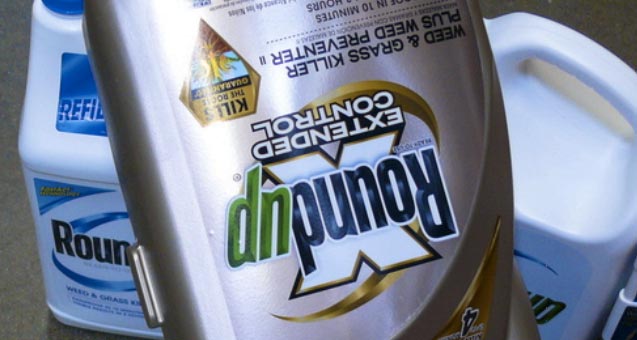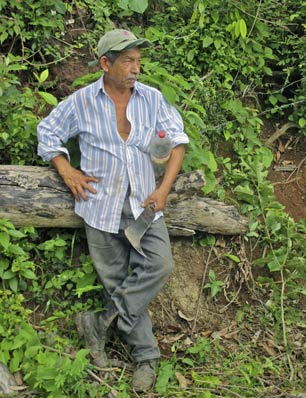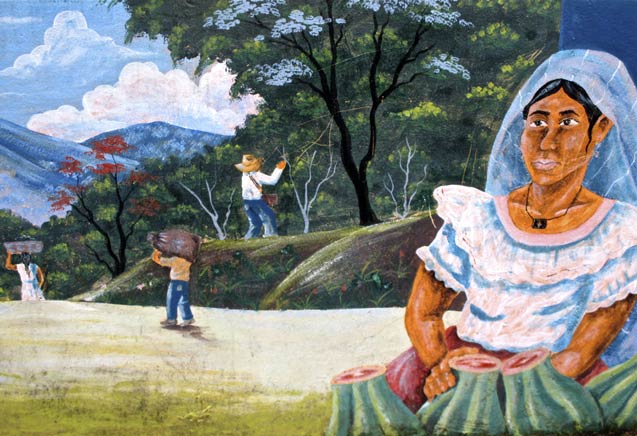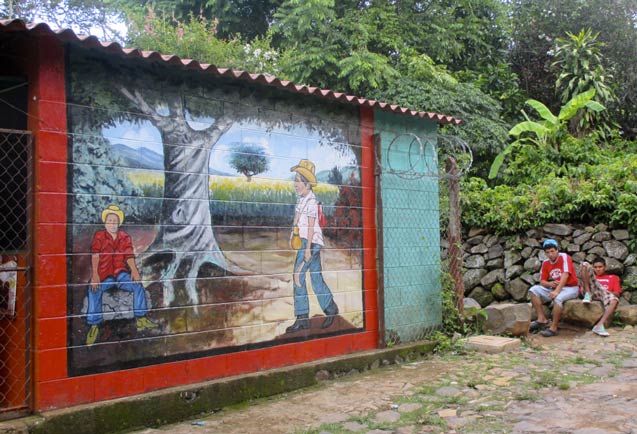
Also see: Dahr Jamail | Salvadoran Farmers Successfully Oppose the Use of Monsanto Seeds
Truthout Interviews Dr. Jeff Ritterman on Roundup and Chronic Kidney Disease
Monsanto’s herbicide Roundup has been linked to a mysterious fatal kidney disease epidemic that has appeared in Central America, Sri Lanka and India.
Dr. Catharina Wesseling, the regional director for the Program on Work and Health (SALTRA) in Central America, which pioneered the initial studies of the region’s unsolved outbreak, put it this way, “Nephrologists and public health professionals from wealthy countries are mostly either unfamiliar with the problem or skeptical whether it even exists.”
Dr. Wesseling was being diplomatic. At a 2011 health summit in Mexico City, the United States beat back a proposal by Central American nations that would have listed CKDu as a top priority for the Americas.
David McQueen, a US delegate from the Centers for Disease Control and Prevention who has since retired from the agency, explained the US position.
“The idea was to keep the focus on the key big risk factors that we could control and the major causes of death: heart disease, cancer and diabetes. And we felt, the position we were taking, that CKD was included.”
The United States was wrong. The delegates from Central America were correct. CKDu is a new form of illness. This kidney ailment does not stem from diabetes, hypertension or other diet-related risk factors. Unlike the kidney disease found in diabetes or hypertension, the kidney tubules are a major site of injury in CKDu, suggesting a toxic etiology.
 Salvadoran farmer returning from the fields, Palo Grande, El Salvador. Photo courtesy of Vivien Feyer.CKDu is now the second leading cause of mortality among men in El Salvador. This small, densely populated Central American country now has the highest overall mortality rate from kidney disease in the world. Neighboring Honduras and Nicaragua also have extremely high rates of kidney disease mortality. In El Salvador and Nicaragua, more men are dying from CKDu than from HIV/AIDS, diabetes, and leukemia combined. In one patch of rural Nicaragua, so many men have died that the community is called “The Island of the Widows.”
Salvadoran farmer returning from the fields, Palo Grande, El Salvador. Photo courtesy of Vivien Feyer.CKDu is now the second leading cause of mortality among men in El Salvador. This small, densely populated Central American country now has the highest overall mortality rate from kidney disease in the world. Neighboring Honduras and Nicaragua also have extremely high rates of kidney disease mortality. In El Salvador and Nicaragua, more men are dying from CKDu than from HIV/AIDS, diabetes, and leukemia combined. In one patch of rural Nicaragua, so many men have died that the community is called “The Island of the Widows.”
In addition to Central America, India and Sri Lanka have been hit hard by the epidemic. In Sri Lanka, over 20,000 people have died from CKDu in the past two decades. In the Indian state of Andhra Pradesh, more than 1,500 have been treated for the ailment since 2007. Given the rarity of dialysis and kidney transplantation in these regions, most who suffer from CKDu will die from their kidney disease.
 Mural celebrating traditional agrarian life, Juayua, El Salvador. Photo courtesy of Vivien Feyer.
Mural celebrating traditional agrarian life, Juayua, El Salvador. Photo courtesy of Vivien Feyer.
In an investigation worthy of the great Sherlock Holmes, a scientific sleuth from Sri Lanka, Dr. Channa Jayasumana, and his two colleagues, Dr. Sarath Gunatilake and Dr. Priyantha Senanayake, have put forward a unifying hypothesis that could explain the origin of the disease. They reasoned that the offending agent had to have been introduced into Sri Lanka within the last 30 years, since the first cases appeared in the mid-1990s. The chemical also needed to be able to form stable complexes with the metals in hard water and to act as a shield, protecting those metals from metabolism by the liver. The compound would also need to act as a carrier and be able to deliver the metals to the kidney.
We know that political changes in Sri Lanka in the late 1970s led to the introduction of agrochemicals, especially in rice farming. The researchers looked for likely suspects. Everything pointed to glyphosate. This herbicide is used in abundance in Sri Lanka. Earlier studies had shown that once glyphosate binds with metals, the glyphosate-metal complex can last for decades in the soil.
Glyphosate was not originally designed for use as an herbicide. Patented by the Stauffer Chemical Company in 1964, it was introduced as a chelating agent. It avidly binds to metals. Glyphosate was first used as a descaling agent to clean out mineral deposits from the pipes in boilers and other hot water systems.
It is this chelating property that allows glyphosate to form complexes with the arsenic, cadmium and other heavy metals found in the groundwater and soil in Central America, India and Sri Lanka. The glyphosate-heavy metal complex can enter the human body in a variety of ways. The complex can be ingested, inhaled or absorbed through the skin. Glyphosate acts like a Trojan horse, allowing the bound heavy metal to avoid detection by the liver, since the glyphosate occupies the binding sites that the liver would normally latch onto. The glyphosate-heavy metal complex reaches the kidney tubules, where the high acidity allows the metal to break free of the glyphosate. The cadmium or arsenic then damages the kidney tubules and other parts of the kidneys, ultimately resulting in kidney failure and, most often, death.
At this point, this elegant theory advanced by Dr. Jayasumana and colleagues can only be considered hypothesis-generating. Further scientific studies will need to confirm the hypothesis that CKDu is indeed due to glyphosate-heavy metal toxicity to the kidney tubules. For the present, this may be the best explanation for the epidemic.
Another explanation is that heat stress may be the cause, or a combination of heat stress and chemical toxicity. Monsanto, of course, is standing behind glyphosate and disputing the claim that it plays any role whatsoever in the genesis of CKDu.
While the exact cause of CKDu has not been proven conclusively, both Sri Lanka and El Salvador have invoked the precautionary principle. El Salvador banned glyphosate in September 2013 and is currently looking for safer alternatives. Sri Lanka banned glyphosate in March of this year because of concerns about CKDu.
 Mural celebrating traditional agrarian life, Palo Grande, El Salvador. Photo courtesy of Vivien Feyer.
Mural celebrating traditional agrarian life, Palo Grande, El Salvador. Photo courtesy of Vivien Feyer.
Glyphosate has had an interesting history. After its initial use as a descaling agent by Stauffer Chemical, scientists at Monsanto discovered its herbicidal qualities. Monsanto patented glyphosate as an herbicide in the 1970s, and has marketed it as “Roundup” since 1974. Monsanto retained exclusive rights until 2000, when the patent expired. By 2005, Monsanto’s glyphosate products were registered in more than 130 countries for use in more than 100 crops. As of 2013, glyphosate was the world’s largest selling herbicide.
Glyphosate’s popularity has been due, in part, to the perception that it is extremely safe. The Monsanto website claims:
Glyphosate binds tightly to most types of soil so it is not available for uptake by roots of nearby plants. It works by disrupting a plant enzyme involved in the production of amino acids that are essential to plant growth. The enzyme, EPSP synthase, is not present in humans or animals, contributing to the low risk to human health from the use of glyphosate according to label directions.
Because of glyphosate’s reputation for both safety and effectiveness, John Franz, who discovered glyphosate’s usefulness as a herbicide, received the National Medal of Technology in 1987. Franz also received the American Chemical Society’s Carothers Award in 1989, and the American Section of the Society of Chemical Industry’s Perkins Medal in 1990. In 2007, he was inducted into the United States’ Inventor’s Hall of Fame for his work on the herbicide. Roundup was named one of the “Top 10 Products That Changed the Face of Agriculture” by the magazine Farm Chemicals in 1994.
Not everyone agrees with this perception of glyphosate’s safety. The first “Roundup resistant” GMO crops, soybeans, were introduced by Monsanto in 1996. The same year, the first glyphosate resistant weeds began to emerge. Farmers responded by using increasingly toxic herbicides to deal with the new super weeds that had developed glyphosate resistance.
In addition to the concern about the emergence of super weeds, a study in rats demonstrated that low levels of glyphosate induced severe hormone-dependent mammary, hepatic, and kidney disturbances. Recently two activist groups, Moms Across America and Thinking Moms Revolution, asked the US Environmental Protection Agency (EPA) to recall Monsanto’s Roundup, citing a host of adverse health impacts in their children from the herbicide, including failure to thrive, leaky gut syndrome, autism and food allergies.
Glyphosate is no ordinary herbicide. Besides being the most used herbicide on earth, it is also the central pillar of Monsanto’s temple. Most of Monsanto’s seeds, including soy, corn, canola, alfalfa, cotton, sugar beets and sorghum, are glyphosate resistant. As of 2009, Monsanto’s Roundup (glyphosate) products, which include its GMO seeds, represented about half of Monsanto’s yearly revenue. This reliance on glyphosate products makes Monsanto extremely vulnerable to research challenging the herbicide’s safety.
Glyphosate-resistant seeds are engineered to allow the farmer to drench his fields in the herbicide to kill off all of the weeds. The glyphosate resistant crop can then be harvested. But if the combination of glyphosate and the heavy metals found in the groundwater or the soil destroys the farmer’s kidneys in the process, the whole house of cards falls apart. This may be what is happening now.
An ugly confrontation has been unfolding in El Salvador. The US government has been pressuring El Salvador to buy GMO seeds from Monsanto rather than indigenous seeds from their own farmers. The US has threatened to withhold almost $300 million in aid unless El Salvador purchases Monsanto’s GMO seeds. The GMO seeds are more expensive. They are not adapted to the Salvadoran climate or soil.
The only “advantage” of Monsanto’s GMO seeds is their glyphosate resistance. Now that glyphosate has been shown to be a possible, and perhaps likely, cause of CKDu, that “advantage” no longer exists.
 Mural, Concepcion de Ataco, El Salvador. Photo courtesy of Vivien Feyer.
Mural, Concepcion de Ataco, El Salvador. Photo courtesy of Vivien Feyer.
What is the message from the United States to El Salvador exactly? Perhaps the kindest explanation is that the United States is unaware that glyphosate may be the cause of the fatal kidney disease epidemic in El Salvador and that the government sincerely believes that the GMO seeds will provide a better yield. If so, a sad mixture of ignorance and arrogance is at the heart of this foreign policy blunder. A less kind interpretation would suggest that the government puts Monsanto’s profits above concerns about the economy, environment and health of the Salvadorans. This view would suggest that a tragic mix of greed and callous disregard for the Salvadorans is behind US policy.
Unfortunately, there is evidence to support the latter view. The United States seems to be completely behind Monsanto, regardless of any science questioning the safety of its products. Cables released by WikiLeaks show that US diplomats around the world are pushing GMO crops as a strategic government and commercial imperative. The cables also reveal instructions to punish any foreign countries trying to ban GMO crops.
Whatever the explanation, pressuring El Salvador, or any country, to buy GMO seeds from Monsanto is a tragic mistake. It is foreign policy not worthy of America. Let’s change it. Let’s base our foreign and domestic policies on human rights, environmental stewardship, health and equity.
Post script: After articles about the seed dispute appeared in the media, The New York Times reported that the United States has reversed its position and will stop pressuring El Salvador to buy Monsanto’s seeds. Thus far, the aid money has not been released.
Join us in defending the truth before it’s too late
The future of independent journalism is uncertain, and the consequences of losing it are too grave to ignore. We have hours left to raise the $12,0000 still needed to ensure Truthout remains safe, strong, and free. Every dollar raised goes directly toward the costs of producing news you can trust.
Please give what you can — because by supporting us with a tax-deductible donation, you’re not just preserving a source of news, you’re helping to safeguard what’s left of our democracy.